

Hagop M. Afarian, MD, MS
Betahistine dosages: 16 mg
Betahistine packs: 30 pills, 60 pills, 90 pills, 120 pills, 180 pills
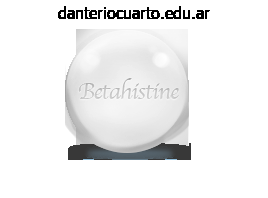
The decision to proceed with a modified radical neck dissection is often made intraoperatively, when the sternocleidomastoid muscle, spinal accent nerve, or inside jugular vein are found to be involved with most cancers. For a neck dissection to be categorized as a modified radical neck dissection, all lymph node levels have to be dissected. Level 5 nodes are sometimes concerned with noncutaneous head and neck squamous cell carcinoma. For patients with a historical past of methicillin-resistant Staphylococcus aureus infections, a preoperative chlorhexidine wash could also be of profit. Regardless, the otolaryngologist must be involved through the intubation to guide the anesthesiologist through the altered anatomy and to provide a surgical airway if necessary. Positioning � Supine, head prolonged with sufficient shoulder support and turned to the nonoperative facet to provide enough publicity of the surgical web site � Table turned ninety degrees; a hundred and eighty levels if bilateral process is deliberate � Shoulder roll or inflatable surgical pillow. Monitoring � Facial nerve monitor can be used to help with identification of the marginal mandibular nerve throughout dissection of degree 1. Instruments and Equipment to Have Available � Head and neck set � Bipolar and monopolar cautery � 2. A affected person with paralysis of the proper trapezius and a dropped shoulder, resulting from 11th nerve sacrifice. At the level of the cricoid or cricothyroid membrane, the incision continues vertically towards the midline. Care is taken to make this incision in a pre-existing neck crease to assist to conceal the scar. With Bovie electrocautery, the pores and skin flap is elevated in a subplatysmal airplane leaving the cervical plexus and external jugular vein down. If the mass carefully abuts the platysma muscle, a cuff of healthy muscle ought to be taken with the mass. Although its course is highly variable, numerous landmarks may help to establish the marginal department during this level in the dissection. The antegonial notch and the heartbeat of the facial artery could be palpated along the inferior border of the mandible. Careful dissection within the delicate tissue overlying the facial artery and vein will enable protected identification of the marginal mandibular nerve.
Best results with the shaver happen with elimination of both the sleeve and trocar and placement of the system through the created surgical tract. A 30-degree scope is ideal for complete inspection of the maxillary sinus via the canine fossa. No packing or dressings are needed, and extra surgical procedure on the ethmoid sinus is nearly never required. Though more and more less frequent, exterior approaches utilizing a Caldwell Luc operation may be employed for antrochoanal polyp (see Chapter 104). Postoperative pain ought to be minimal and is often managed with Tylenol or low-dose narcotics. Nasal steroid sprays and different intranasal medications are typically began 1 week after surgery or after the completion of systemic steroids if used. There is currently no strong evidence to help the routine use of postoperative antibiotics. Certainly, if an infection is encountered, a tradition ought to be taken, and the affected person should be placed on empiric antibiotic therapy. Generally, the affected person is cautioned in opposition to nose blowing and weight lifting is limited to lower than 10 kilos postoperatively. For the endoscopic approach, nasal saline irrigation often serves as sufficient postoperative care. Wide postoperative analysis of the surgical site is afforded by the maxillary antrostomy. In instances of recurrence, performing a maximal maxillary antrostomy aids in irrigation, treatment delivery, and postoperative surveillance. In many sufferers, the dearth of a transparent prognosis and indication for surgery can lead to unwarranted and unsuccessful surgery.
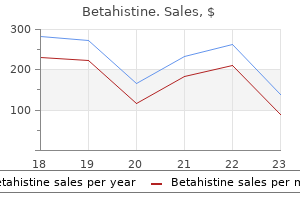
Patients with well-defined, unilocular abscesses are candidates for this approach. It is unclear if this technique is an choice for immunocompromised sufferers (diabetics). Transoral drainage of retropharyngeal abscess is indicated for pediatric patients or small abscesses limited to this space. However, efforts have to be made to identify the source of an infection, and this have to be treated synchronously or in an elective trend. Anaerobic bacteria in higher respiratory tract and head and neck infections: microbiology and treatment. Cervical necrotizing fasciitis and diabetic ketoacidosis: literature evaluation and case report. Surgical debridement and adjunctive hyperbaric oxygen in cervical necrotizing fasciitis. Surgical vs ultrasound-guided drainage of deep neck space abscesses: a randomized managed trial: surgical vs ultrasound drainage. The influence of delayed surgical drainage of deep neck abscesses in adult and pediatric populations. Controversies within the administration of deep neck house an infection in children: an evidence-based review. Conservative management of deep neck abscess with intravenous antibiotics, with or without needle aspiration, is used more usually within the pediatric population. Despite this, there seems to be a subset of pediatric sufferers who require quick surgical intervention. Lawrence and Batemen8 describe the controversies involved in treating deep neck abscess within the pediatric age group and concluded that airway compromise, problems (Lemierre syndrome, cranial nerve palsy, septicemia), abscess >2. Most deep neck abscesses that occur in adults are brought on by mixed aerobes and anaerobes. This is usually for the therapy of cervical spondylosis by the orthopedic or neurologic surgeon. Rarely the top and neck surgeon will be involved within the therapy of pathology involving the spine, corresponding to an infection or primary and metastatic neoplasms.
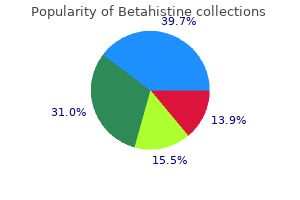
The position of the natural ostium of the sphenoid should be confirmed prior to making the inferior incision. Once the flap is dissected free, it ought to be protected from possible harm from a drill by plac ing it in the nasopharynx or maxillary sinus (via antrostomy). Perforation of the flap mucosa can result in failure of the restore as a outcome of loss of a watertight seal. Dissection within the correct submucoperichondrial aircraft for a nasoseptal flap reduces the risk of perforation of the flap. This aircraft must be estab lished at the anterior portion of the dissection, and all inci sions should be made prior to proceeding posteriorly with the dissection. Surgical Technique this section will provide particulars concerning cranium base restore utilizing free mucosal grafts and the nasoseptal flap. Defects that persist regardless of these methods may require using free tissue switch with microvascular strategies. Decongestants provide a bigger endoscopic surgical cavity by decreasing mucosal congestion as nicely as decreasing bleeding. Topical epinephrine also can be used as long as the surgeon remains aware of the chance of potential rebound bleeding after this treatment stops functioning. Endoscopic septoplasty Operative Risks Damage to the flap pedicle or perforation of the flap Reconstruction After Skull Base Surgery 835 � Lateralization of the inferior and center turbinates the inferior and middle turbinates are outfractured to al low visualization of the whole height of the nasal septum from the olfactory sulcus to the nasal ground. Measurement of the skull base de fect previous to accumulating the graft is important so as to make sure that the graft harvested is the suitable measurement. Many surgeons advise marking the mucosal facet of the graft previous to removal to have the ability to ensure that this facet is positioned dealing with into the nasal cavity to allow vascular ization. If the center turbinate is chosen as the donor web site for a mucosal graft, the whole turbinate ought to be adequately visualized as much as the axilla previous to starting the har vest.
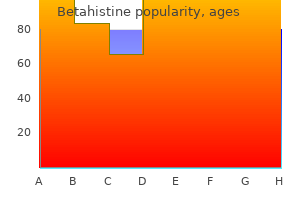
Diseases
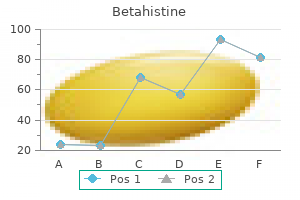
Patients are encouraged to therapeutic massage the surgical site and the incision beginning at 2 weeks postoperatively to soften the realm and more quickly disperse edema and reduce scar formation. Outcomes, Prognosis Long-term outcomes are associated to the pathology being addressed surgically. Multiple case collection relating to the excision of parotid pleomorphic adenomas show the long-term control of this tumor with shut but adverse margins. For malignant tumors of the deep lobe, outcome and prognosis are closely associated to the precise pathology, grade of the tumor, and margin status. Malignant Tumors of the Deep Lobe A complete evaluation of the varying malignant salivary pathologies is beyond the scope of this chapter. A malignant tumor of the deep lobe parotid is managed in related trend to one of many superficial lobe; however, the anatomic location within the deep lobe typically places the tumor in even nearer proximity to the facial nerve and makes it harder to get hold of a big margin of regular surrounding tissue. We routinely use frozen section of a resected tumor that can reliably differentiate between high-grade malignancy and tumors that are either benign or represent low-grade malignancy. If intraoperative findings are suggestive of a malignant tumor and facial nerve involvement is found, pathologic Evidence-Based Medicine Question Does higher auricular nerve preservation enhance sensation Periauricular numbness is a typical, sometimes the most typical, criticism after parotidectomy. In studies that examine the preservation of the posterior branch of the nerve, short-term enchancment of sensation was higher within the preservation group. Deep Lobe Parotidectomy 623 Editorial Comment Deep lobe parotid tumors are decidedly unusual associated to superficial pathologies. Deep lobe tumors ought to be managed, as mentioned on this chapter, by high-volume salivary gland surgeons. When that is performed, even difficult but acceptable inflammatory and malignant lesions can be safely managed.
Obliteration of adipose tissue planes within the pterygopalatine fossa, infratemporal fossa, and nasopharynx often indicates tumor transgression alongside these boundaries. Medial maxillectomy is indicated for resection of tumors of the lateral nasal wall, nasal cavity, nasal septum, or the medial wall of the maxillary sinus. Medial maxillectomy may be used for exposure of and entry to the pterygopalatine fossa, pterygoid plates, nasopharynx, sphenoid sinus, clivus, and the medial infratemporal fossa. Medial maxillectomy could be combined with resection of the ground of the nose, palate, or higher gingiva (inferior maxillectomy). Medial maxillectomy can also be combined with a transcranial method for resection of the anterior skull base. A, Coronal computed tomography scan demonstrating opacification of the right nasal cavity, the maxillary and ethmoid sinuses. B, Coronal T1-weighted magnetic resonance imaging with gadolinium of the identical affected person revealing that the lesion is proscribed to the nasal cavity and ethmoid sinuses and that the changes within the maxillary sinuses are due to retained secretions secondary to obstruction of the ostium, rather than soft tissue involvement. Medial Maxillectomy 707 Preoperative Preparation � A thorough preoperative evaluation should determine the candidacy of a patient for surgical management of his or her neoplasm. Radiation and/or chemotherapy may be used preoperatively as induction (neoadjuvant) or postoperatively as adjuvant therapy. Such selections are best discussed within the format of a multidisciplinary tumor board. The anticipated postoperative course including size of stay in the hospital, feeding, rehabilitation, and the need for adjuvant therapy must be described. Antibiotics must be broad spectrum overlaying the aerobic and anaerobic bacterial flora of the nasal and oral cavities. Intraoperative topical antibiotic irrigation of the surgical subject tremendously reduces postoperative infections.
In sufferers with spinal compression, this ought to be done with neurophysiologic monitoring. Preoperative Preparation � Informed consent Informed consent includes a dialogue of potential dangers and anticipated sequelae of surgery. For anterior approaches, the best concern is postoperative hoarseness or aspiration because of harm to the superior or recurrent laryngeal nerves. Some diploma of dysphagia is anticipated postoperatively and may persist for months in a minority of patients. Perforation of the esophagus or hypopharynx is a remote possibility, however the danger is increased when displaced hardware or a big osteophyte is being eliminated. Arguments can be made for either facet, depending on the level of exposure, handedness of the surgeon, risk of retraction harm of the recurrent laryngeal nerve, deviation of the esophagus, and prior surgery. Most right-handed surgeons discover a right-sided approach to be simpler for instrumentation Perioperative Antibiotic Prophylaxis � First-generation cephalosporin. However, in reoperative circumstances, recurrent laryngeal nerve monitoring could possibly be considered. Skin incisions for approaching, upper cervical backbone (C3-5) and, lower cervical backbone (C5-7). The neck is extended and the shoulder is retracted inferiorly with tape to keep away from obstruction of a lateral cervical radiograph. Inferiorly, the surgical window narrows between the sternocleidomastoid and omohyoid muscular tissues. The recurrent laryngeal nerve may be injured instantly (transection, crush injury, thermal injury) or from retraction. A transverse incision is deliberate in a pure skin crease in the mid- to upper neck for C2-C4 and the mid- to decrease neck for C5-C7. The incision extends from the paramedian position (1 cm lateral to the midline) to the anterior border of the sternocleidomastoid muscle. After prepping, adhesive drapes are used to keep away from the position of steel instruments around the surgical subject. These could intrude with intraoperative imaging (lateral radiograph or fluoroscopy) to confirm the cervical spine degree.

After retraction of the hypoglossal nerve and posterior belly of the digastric, blunt and sharp dissection medial to the inner carotid artery will determine the retropharyngeal lymph node. Monopolar cautery should be avoided on this space to forestall damage to this construction. If the hematoma is rapidly increasing, the incision may have to be opened on the bedside to avoid airway compromise. Editorial Comment Cancers of the oropharynx are managed with nonsurgical approaches in most institutions. Retropharyngeal nodes in squamous cell carcinoma of oropharynx: incidence, localization, and implications for target quantity. Prognostic affect of retropharyngeal lymph node metastasis in squamous cell carcinoma of the oropharynx. Retropharyngeal lymph node dissection in oropharyngeal most cancers treated with transoral robotic surgery. Pattern of cervical lymph node metastasis in tonsil cancer: predictive factor evaluation of contralateral and retropharyngeal lymph node metastasis. Alternative Management Plan In the first setting, sufferers could be managed with nonsurgical therapy alone. The patient may be provided re-irradiation (if already performed) and/or chemotherapy as palliative measures. The prestyloid compartment lies deep to the masticator space, with the deep lobe of the parotid extending into its lateral side. Histology 1) Benign tumors often current as a submucosal asymptomatic mass within the oropharynx. The fascia of the tensor veli palatini muscle divides the parapharyngeal house right into a prestyloid and a poststyloid compartment. In patients suspected of getting paragangliomas inside the poststyloid compartment, a household history of paragangliomas ought to be sought.
Treslott, 34 years: Patients are advised to use oxymetazoline nasal spray each 8 hours in every nostril for 3 to 4 days to decrease postoperative nasal bleeding. Consultation with a Neurovascular Surgeon may be warranted if intraoperative vascular bypass is a chance.
Gorok, 49 years: The author We choose two incisions for better visualization all through the surgery and flexibility to camouflage the incisions. Most widespread sites for residual tumor embody the cavernous sinus, center cranial fossa, and masticator space.
Charles, 59 years: By avoiding the muscle, inadvertent entry into the lingual artery and/or pointless morbidity could be prevented. In addition, the appliance of technologic advances and adaptive surgical techniques has improved affected person outcomes and expanded the breadth of procedures possible in clinical settings, avoiding the risks and costs of common anesthesia for in any other case minor procedures.
Akrabor, 51 years: Athletes could also be unwilling to miss follow or competitors through the healing process. Methylene blue is preferred to isosulfan blue because of the roughly 1% incidence of anaphylaxis with isosulfan.
References
Realice búsquedas en nuestra base de datos: